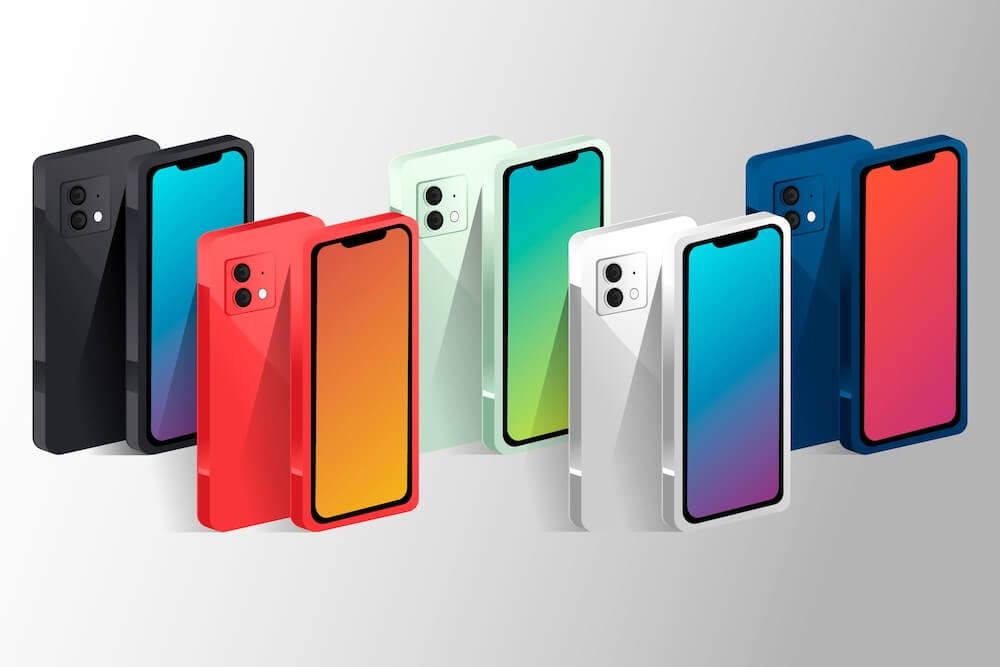Apple has long been recognised as a leader in the tech industry—not just for its innovative products but also for its commitment to customer support and product longevity. As an iPhone user, you might wonder how long you can expect your device to receive support from Apple.
This guide seeks to provide a comprehensive overview of Apple’s support timeline for iPhones—helping you make informed decisions about your device’s lifecycle and its impact on the environment.
Apple’s support timeline for iPhones
iPhones may become less secure as they get older, as they are unable to handle new operating system upgrades or applications. Furthermore, an iPhone’s resale value may be affected if it can no longer be supported. As such, understanding support timelines is imperative.
Warranty periods
When you purchase a new iPhone, it comes with a standard one-year limited warranty. In practice, this warranty covers manufacturing defects and hardware issues that may arise during the normal use of your device. However, it’s important to note that this warranty doesn’t cover accidental damage or normal wear and tear.
For those seeking extended coverage, Apple offers AppleCare+. This premium service extends your warranty coverage to two years from the original purchase date. Furthermore, it includes up to two incidents of accidental damage protection every 12 months.
Each incident is subject to a service fee, but it’s significantly lower than the cost of out-of-warranty repairs. AppleCare+ also provides you with priority access to Apple experts via chat or phone, which can be invaluable when you need quick assistance with your device.
Software update support
One of Apple’s strongest suits is its commitment to providing software updates for iPhones long after their release. Typically, Apple supports iPhones with the latest iOS updates for about 5-6 years from their release date. This is significantly longer than most Android manufacturers, which often stop providing updates after 2-3 years.
From a historical perspective, Apple has consistently improved its support duration. For example:
- The iPhone 5s, released in 2013, received updates until iOS 12 in 2019—a remarkable 6 years of support.
- The iPhone 6s and 6s Plus— which premiered in 2015—were supported until iOS 15 in 2021—another impressive six-year run.
- The iPhone X (2017) continued to receive updates until 2023, and all the later models are still receiving updates.
This extended software support not only keeps your device secure and running smoothly but also contributes to a longer usable lifespan. Thereby, reducing the need for frequent upgrades and thereby minimising electronic waste.
Understanding support lifecycles
Support lifecycles refer to the length of time and conditions under which a device manufacturer offers hardware support, security patches, and software upgrades.
Major iPhone releases and support duration
To give you a clearer picture of how long you can expect your iPhone to be supported, here’s a list of recent iPhone models and their respective support timelines:
- iPhone XS and XS Max (2018): Still supported as of 2024
- iPhone XR (2018): Still supported as of 2024
- iPhone 11 series (2019): Still supported as of 2024
- iPhone 12 series (2020): Still supported as of 2024
- iPhone 13 series (2021): Still supported as of 2024
- iPhone 14 series (2022): Still supported as of 2024
The same holds true for the later 15 and 16 series, which came out last year and this year, respectively. They will be supported for years to come.
Based on Apple’s track record, we can expect these models to continue receiving support for several more years. However, it’s worth noting that support duration may vary slightly based on the model.
For instance, special edition models like the iPhone SE tend to have somewhat shorter support lifecycles due to their use of older hardware components.
End of support notifications
Apple is generally transparent about the end of support for iPhones. When a device reaches its final iOS version, Apple stops providing major updates but may continue to offer security patches for a short time.
For example, even after an iPhone model is no longer eligible for new iOS version updates, Apple might still release smaller updates to fix security vulnerabilities, such as a security fix in iOS 12.5.6, which was pushed to the iPhone 6 and iPhone 5S.
Users can check for end-of-support notices through several channels:
- iOS notifications: Apple often informs users when their device no longer supports the latest iOS.
- Apple Support page: Apple lists older devices and their support status.
- News and announcements: Technology news outlets often report when Apple officially discontinues support for certain models.
Maximising support benefits
To maximise support benefits, consider:
Utilising warranty and AppleCare+
To make the most out of Apple’s warranty and AppleCare+:
- Know what’s covered: AppleCare+ covers accidental damage, but you’ll pay a deductible for repairs. This may save you several dollars in the event of a cracked screen or liquid damage.
- Keep receipts and documents: AppleCare+ is tied to your device’s serial number, but having receipts and documentation helps in case of disputes.
- Use authorised service providers: To maintain warranty protection, always have your device serviced by Apple or an authorised provider.
- Report issues early: If you notice any problems, report them while your warranty is active to avoid out-of-pocket repair costs.
- Extend coverage where possible: Apple allows you to purchase or renew AppleCare+ even after your initial coverage expires, as long as your device is still in excellent condition.
Staying current with software updates
Regular software updates are crucial for both performance and security. To ensure you stay protected:
- Update as soon as possible: Always activate automatic updates to continually receive the latest security patches and features.
- Monitor your device’s performance: While older devices may slow down with newer iOS versions, the security benefits generally outweigh performance issues. In cases where performance is significantly impacted, consider turning off non-essential features to extend the device’s lifespan.
- Backup regularly: Back up your device frequently by employing iCloud or iTunes to prevent data loss in case of any issues with updates.
Accessing support resources
Apple offers a variety of support channels for iPhone users. Here are some key resources:
- Apple support app: Provides direct access to troubleshooting guides, appointment scheduling, and chat support.
- Genius bar appointments: You can schedule a visit to an Apple Store for hands-on technical assistance with any hardware or software issues.
- Online support: Apple’s website offers a wide range of user guides, how-to articles, and FAQs.
- Apple community: Users can also turn to Apple’s official forums, where fellow users and experts can offer solutions.
What to do when support ends?
When support ends, there are several avenues one can consider. For example:
Transitioning to a new device
When your iPhone no longer receives software updates, or you notice significant performance issues, it might be time to consider transitioning to a new device. Here are some tips for making that transition smooth:
- Backup your data: Before upgrading, ensure that your data is safely backed up via iCloud or a local computer backup.
- Use Apple’s quick start feature: This feature allows one to transfer data directly from their old iPhone to your new one. Thus, making setup quick and easy.
- Restore from a backup: If you want a fresh start but don’t want to lose your data, restore from an iCloud or iTunes backup after setting up your new iPhone.
Resale and trade-in options
When it comes to resale and trade-in options, you have several choices that not only benefit you financially but also contribute to environmental sustainability.
Apple’s trade-in programme is a convenient option for many users, especially in countries where iPhone upgrade programmes aren’t available. This programme lets you trade in your old iPhone to offset the cost of a new device. The process is straightforward and reliable, with Apple providing a fair market value for your device based on its condition and model.
However, Apple’s trade-in programme isn’t the only option available. On platforms like myhalo, you can explore a range of ‘ReLoved & As-New Apple Products‘ while also trading in your old device for a competitive price.
It’s worth noting, though, that even if you decide not to upgrade or use a trade-in programme, your old iPhone can still serve various purposes. You could repurpose it as:
- A home automation controller
- A digital photo frame
- A media centre remote
- A portable media player
In cases where the iPhone is beyond repair or repurposing, it’s crucial to ensure its eco-friendly disposal. In fact, the best course of action is to recycle through certified e-waste facilities. This approach prevents environmental damage by keeping harmful materials out of landfills. It also supports sustainable practices by recovering valuable materials for reuse.
By considering these options, you’re not just making a financially savvy decision— but also contributing to a more sustainable approach to technology consumption. Whether you choose to trade in, repurpose, or recycle your old iPhone, you’re playing a part in reducing e-waste and promoting a ‘zero e-waste economy’ in the tech industry.
Also read: What to do with old iPhones?
Conclusion
With typically 5-6 years of software support and various warranty options, Apple provides one of the longest support periods in the smartphone industry and various warranty options.
You can get the most out of your iPhone by staying up to date on its support status, updating your software on a regular basis, and making use of Apple’s support resources. When the time comes to transition to a new device, options like trade-ins and refurbished products offer environmentally conscious alternatives to simply discarding your old phone.
Remember, every decision you make regarding your iPhone’s lifecycle has an impact on the environment. By choosing to extend your device’s life through updates and repairs— or responsibly recycle it when it’s truly at the end of its life— you’re appreciably contributing to a more sustainable tech ecosystem.
As technology continues to dynamically evolve, so will Apple’s support policies. Stay informed, make conscious decisions, and together we can work towards a more sustainable future in the world of technology.



